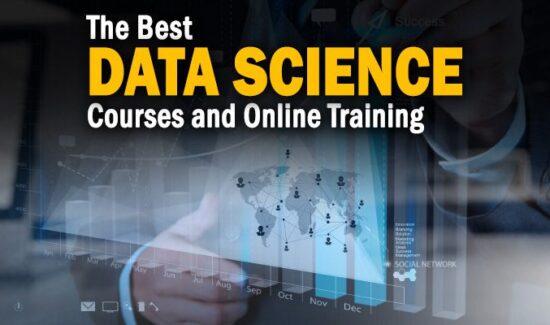Deep Learning Basics: Learn How to “Unlock” Your Data


This is part of Solutions Review’s Premium Content Series, a collection of contributed columns written by industry experts in maturing software categories. In this submission, Vyasa Founder and CEO Christopher Bouton offers some deep learning basics, like how to “unlock” your data using the technology.
 Industry leaders estimate that nearly 80 percent of organizational data is dark – siloed in individual storage locations and buried under outdated or redundant content. As a result, teams often miss critical information needed to drive innovation, improve services and stay ahead of the competition.
Industry leaders estimate that nearly 80 percent of organizational data is dark – siloed in individual storage locations and buried under outdated or redundant content. As a result, teams often miss critical information needed to drive innovation, improve services and stay ahead of the competition.
This scenario has caused organizations across industries to struggle to make use of their rapidly growing data sets. For example, a hospital creates an average of 50 petabytes of data a year. Of that data, nearly 97 percent of it goes unused. Yet, these organizations still invest significantly in storage and analytics that only get to a fraction of their data. For example, cloud storage spending alone is expected to reach 137.3B by 2025.
In an attempt to improve their data utilization practices, organizations have turned to their IT and data science teams for implementation, an endeavor typically fraught with infrastructure blockages, privacy concerns, and frustration, ultimately wasting time and valuable resources.
Fortunately, we’ve seen a wave of innovative solutions emerge to address this problem, particularly in the advancement of deep learning models.
Deep Learning: More Than Just Predictive Analytics
When considering deep learning and artificial intelligence, most think of future-looking capabilities like fully autonomous “hands-off” operations. While these capabilities show promise, they are often only implementable for organizations with a very mature machine learning department. However, there are semi-autonomous solutions available where deep learning is making an impact for companies of all stages – particularly in enabling individuals and organizations to unlock and operationalize challenging data sets.
Transformers, a type of advanced deep learning model, have seen great popularity for their capability to “understand” text in natural language processing (NLP) and, more recently, computer vision tasks. What differentiates transformers from other deep learning models is their ability to understand the context around language structures in a large data sequence.
Unlike a traditional model that processes each term separately and outside the context of the sequence, transformers use self-attention to build rich representations of each constituent in the data span, allowing these models to understand the relevance of the location of a term, the relation of one term to the next (even if far away from each other) and more. When trained on larger datasets, these models reach remarkable accuracy and recall for understanding unstructured data like large documents of natural language text.
What does this mean for today’s data challenges? For starters, it means the mountains of unstructured data your organization has been storing can now be easily searched and accessed. Instead of largely relying on metadata and structured data sources like spreadsheets or SQL databases, organizations can now unlock mass amounts of valuable insight that otherwise were impossible to identify without having to manually search through the document.
Now you can simply ask questions of your unstructured data and uncover key data points that are critical to business decisions. In turn, organizations are now operationalizing a significant portion of their data that was expensive to store and previously provided little value.
The Emergence of the Data Fabric
In addition to improving the way we work with complex data types, transformers and other deep learning models are presenting a paradigm shift in the way we manage data. Known as the data fabric, organizations can apply deep learning to their data to shift away from monolithic architectures such as data lakes or traditional databases that often deepen silos and limit data accessibility.
With a data fabric approach, deep learning models can “crawl” into these disparate data sources to create indexes that make the content easily searchable and accessible. This can be used to unify disparate data sources without having to reconfigure existing architectures or undergo costly and time-intensive data migrations. As a result, data is instantly accessible to all users throughout an organization.
Where Deep Learning is Making an Impact Today
The convergence of deep learning and data fabric architectures is accelerating our access to knowledge and driving insight across organizations. Some areas that are seeing the biggest impact today, include:
- Health Sciences: Researching and analyzing complex literature is key to a number of healthcare and life science tasks – particularly around early-stage drug discovery and understanding rare diseases. With a deep learning-enabled data fabric, healthcare and life science professionals can quickly identify insights that accelerate the development of new therapeutics, help us understand the variables of a new disease, and ultimately improve paths of care.
- Higher Education: Universities and other higher education institutions hold immense amounts of knowledge. However, due to department structures, they are also ripe with silos. This can all be overcome with a data fabric that can improve data accessibility across campuses, enabling greater transparency, cross-department collaboration, and enhanced innovation.
- Government Agencies: State and federal agencies are undergoing massive IT modernization efforts. Data fabrics hold tremendous promise in accelerating this process by enabling a key aspect of improving IT efficiency – data accessibility. With a data fabric, state and local governments can enhance access to newly digitized documents and create data connections across agencies which improves public service, future planning, and more.
- Manufacturing: Manufacturing is an incredibly data-rich industry, but has been challenged with silos and lack of data usability. Data fabrics can act as the foundation for many of the efforts already underway to make this data more actionable so that manufacturers can improve tasks such as R&D, quality control, competitor analysis, and more.
A New Path Forward for Data
The evolution of deep learning has changed the way we approach and interact with data. Our newly acquired access to valuable insight is making a real-world impact today. Whether it’s advancing R&D around life-saving therapeutics, enabling collaboration within higher education, improving data accessibility for public services, or enhancing manufacturing quality control – it’s not a matter of if deep learning can improve your organization, but how. All with a data fabric providing the foundation along the way.




































